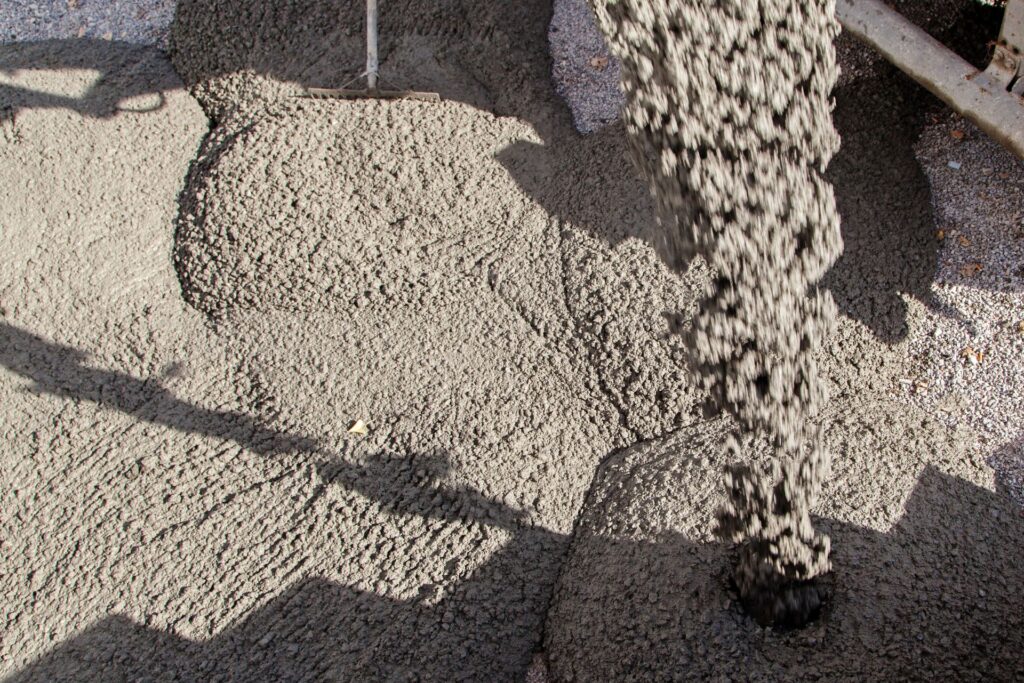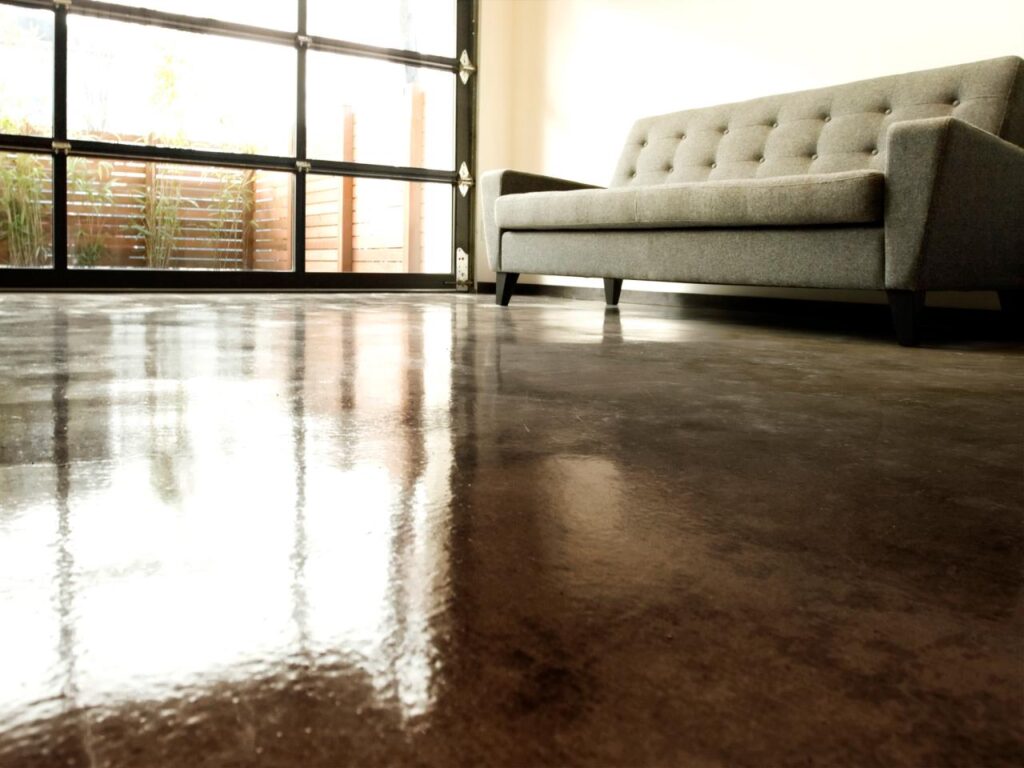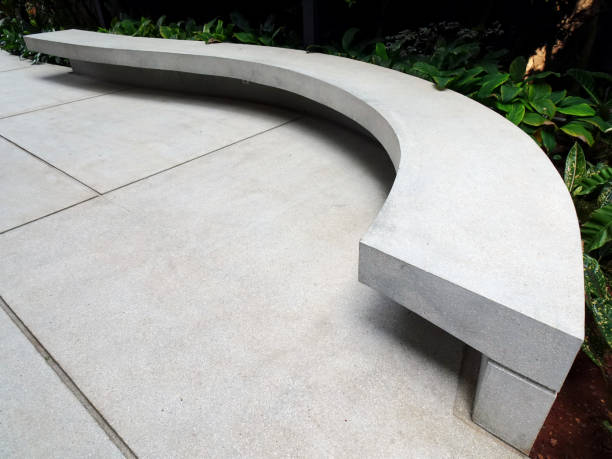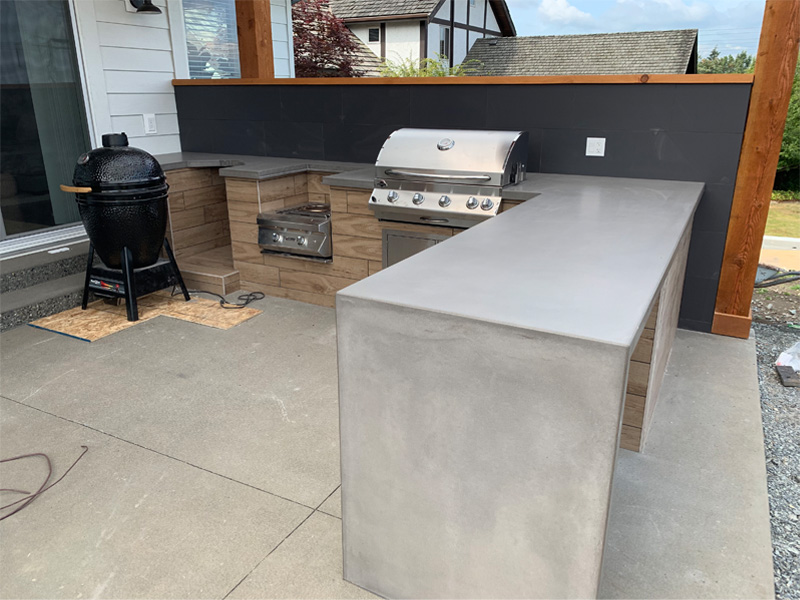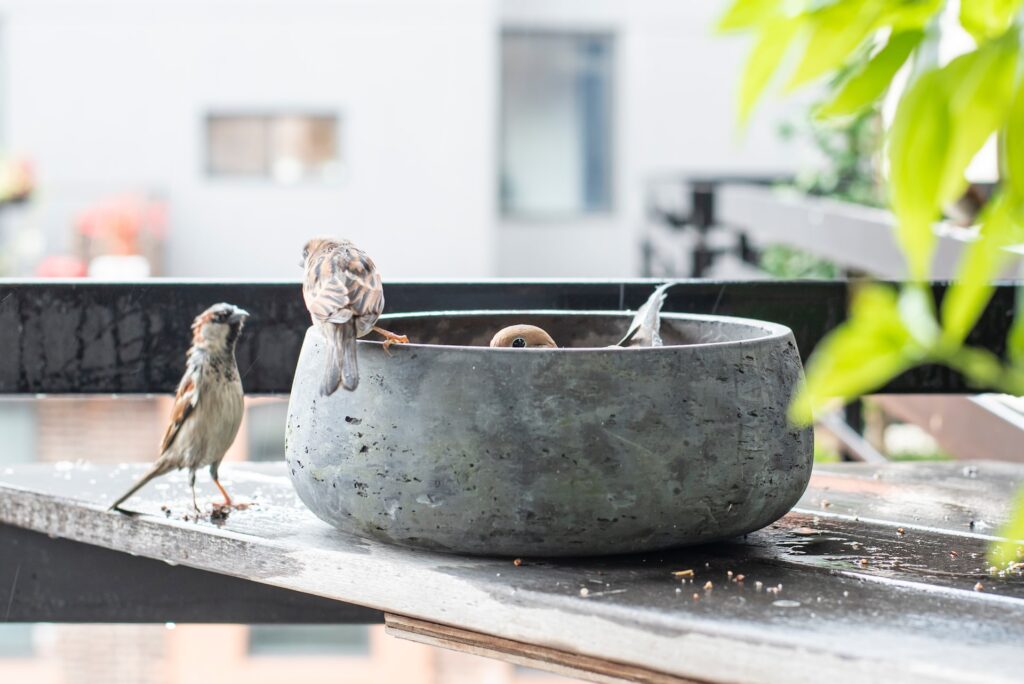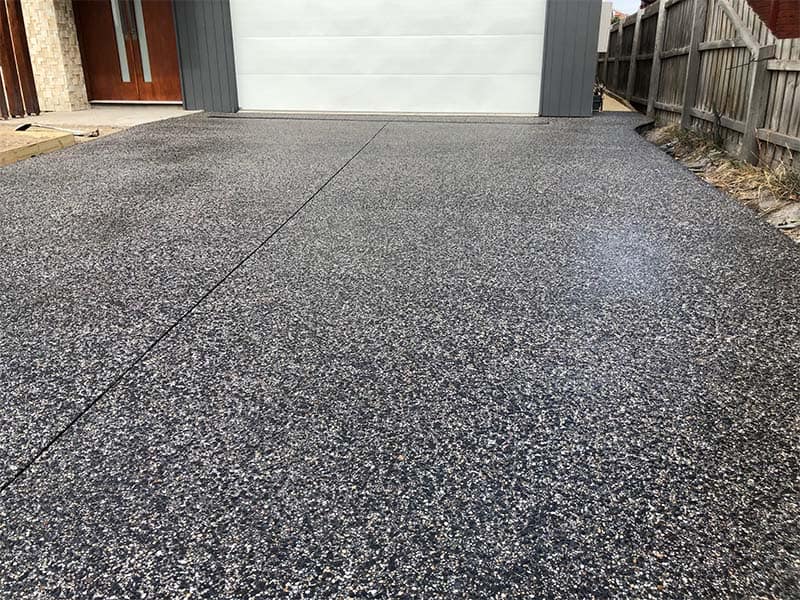Welcome to our comprehensive guide on a topic that many DIY enthusiasts and professional contractors alike often ponder: whether to cover concrete after pouring. Proper concrete curing is a critical step that ensures the strength, durability, and longevity of your concrete projects, whether it’s a driveway, patio, or foundation. In this article, we’ll delve into the science behind concrete curing, the benefits of covering concrete, various methods you can use, and common pitfalls to avoid. By the end, you’ll have a clear understanding of why covering your concrete can make all the difference in the success of your construction endeavors.
Covering concrete after pouring is essential for proper curing. It helps maintain the necessary moisture and temperature, preventing cracks and enhancing the strength and durability of the concrete. Methods such as using plastic sheeting, concrete blankets, or curing compounds can protect the concrete from weather conditions and ensure optimal curing, leading to a longer-lasting and more resilient concrete structure.
- Understanding Concrete Curing
- The Importance Of Covering Concrete After Pouring
- Benefits Of Covering Concrete
- Methods Of Covering Concrete
- Step-By-Step Guide To Covering Concrete
- Common Mistakes To Avoid
- FAQs: About Should I Cover Concrete After Pouring?
- How long should I cover the concrete after pouring?
- What materials can I use to cover concrete?
- Can I walk on concrete while it’s covered?
- What happens if I don’t cover my concrete?
- How do I know when it’s time to uncover concrete?
- Can covering concrete affect its color?
- Should I cover concrete in hot weather?
- Is it necessary to cover concrete in cold weather?
- Can I use a curing compound instead of physical coverings?
- How can I monitor the curing process while the concrete is covered?
- Conclusion
Understanding Concrete Curing
Definition of Concrete Curing
Concrete curing is a vital process in construction, involving maintaining adequate moisture, temperature, and time to allow concrete to achieve its desired properties. Essentially, curing is the method through which concrete’s hydration process is controlled to ensure optimal strength and durability. Without proper curing, concrete can develop surface cracks, reduced strength, and a shorter lifespan.
The curing process starts immediately after the concrete is placed and finished, continuing for a specific period depending on the mix and environmental conditions. This stage is crucial because it helps the concrete retain moisture and continue the chemical reactions necessary for it to gain strength. Proper curing ensures that the concrete will be able to withstand various loads and stresses throughout its service life, making it a fundamental step in any construction project.
The Science Behind Curing
The science behind concrete curing revolves around the chemical process known as hydration. Hydration is the reaction between cement particles and water, which leads to the hardening of the concrete. When water is added to cement, it reacts with the compounds present, such as calcium silicates and aluminates, to form calcium silicate hydrate (C-S-H) and other by-products.
Hydration is an exothermic reaction, meaning it releases heat. This reaction occurs over several days and even weeks, gradually increasing the concrete’s strength. The rate of hydration is influenced by various factors, including temperature, humidity, and the water-cement ratio.
To delve deeper into the chemical process, when cement and water mix, the hydration starts with the dissolution of calcium, silicon, aluminum, and iron ions. These ions then form calcium hydroxide and C-S-H, the latter being the primary binder that gives concrete its strength. The C-S-H forms a dense, interlocking matrix that binds the aggregate particles together, providing structural integrity.
During the initial stages of hydration, the concrete remains in a plastic state, allowing it to be molded into the desired shape. As the hydration process progresses, the concrete transitions from plastic to solid, continuing to gain strength over time. It’s crucial to maintain adequate moisture during this period to prevent the concrete from drying out prematurely, which can halt the hydration process and result in weaker concrete.
Effective curing methods include water curing (keeping the concrete surface moist), membrane curing (applying a sealant to retain moisture), and steam curing (using heat and moisture). Each method aims to provide an environment that supports ongoing hydration, ensuring the concrete develops its full potential in terms of strength and durability.
In conclusion, understanding and implementing proper concrete curing practices are essential for achieving high-quality, long-lasting concrete structures. By controlling the hydration process through adequate curing, we ensure that concrete can meet the demands of various applications, from residential buildings to large infrastructure projects.

The Importance Of Covering Concrete After Pouring
When you pour concrete, its journey from a malleable mixture to a solid, durable structure is crucial. Ensuring that this process happens under optimal conditions is vital for the longevity and strength of the concrete. One of the most important steps in this process is covering the concrete after it has been poured. This step cannot be overlooked, as it plays a significant role in protecting the concrete from the elements, maintaining the necessary moisture levels, and controlling temperature. Let’s delve deeper into why covering concrete after pouring is so essential.
Protecting Against Weather
Concrete is highly susceptible to the elements right after it has been poured. Exposure to rain, sun, and wind can adversely affect the curing process.
Rain: If fresh concrete gets rained on, the extra water can lead to surface defects. It can wash away the cement paste on the surface, leading to a weaker top layer that can result in scaling or spalling in the future. Covering the concrete with waterproof sheeting or tarps helps shield it from rain, ensuring the integrity of the surface.
Sun: Direct sunlight can cause the concrete to dry too quickly. Rapid drying can result in shrinkage cracks and a weaker structure overall. By covering the concrete, you provide a buffer that reduces the direct impact of the sun, allowing for a more controlled evaporation of moisture.
Wind: Strong winds can also lead to rapid drying, similar to the effects of direct sunlight. Wind can whisk away the moisture from the surface of the concrete, causing it to cure unevenly and potentially leading to surface cracking. Covering the concrete helps prevent this by reducing the direct exposure to wind, thus maintaining a more consistent curing process.
Maintaining Moisture
Moisture retention is a critical factor in the curing process of concrete. The chemical reaction between water and cement, known as hydration, is what gives concrete its strength. This reaction requires adequate moisture to proceed effectively.
Hydration Process: The hydration process is essential for the concrete to reach its maximum strength and durability. If the concrete dries out too quickly, the hydration process is interrupted, resulting in a weaker final product. Covering the concrete helps retain moisture, allowing the hydration process to continue at a steady rate, which is crucial for the concrete’s overall strength and longevity.
Preventing Cracks: When the surface of the concrete dries out faster than the interior, it can lead to surface cracks known as plastic shrinkage cracks. These cracks can compromise the durability of the concrete and lead to further issues down the line. By covering the concrete, you help maintain an even moisture level throughout the curing process, reducing the risk of such cracks forming.
Temperature Control
Temperature fluctuations can have a significant impact on the curing process of concrete. Both high and low temperatures can affect the rate at which concrete sets and cures, potentially leading to structural issues.
Heat: In hot weather, concrete can set too quickly, which can result in a weakened structure due to incomplete hydration. Covering the concrete helps to moderate the temperature, preventing it from getting too hot and allowing the curing process to proceed at a more controlled pace.
Cold: Conversely, in cold weather, concrete can take too long to set, which can also be problematic. If the concrete freezes before it has set properly, it can lead to a compromised structure. Covering the concrete with insulating blankets or other protective materials helps keep the concrete warm, ensuring that it sets properly even in lower temperatures.
Thermal Gradients: Sudden temperature changes can cause thermal gradients within the concrete, leading to internal stresses and potential cracking. By covering the concrete, you help buffer it from abrupt temperature changes, allowing for a more uniform curing process.
In conclusion, covering concrete after pouring is a simple yet highly effective step in ensuring the longevity and durability of your concrete structures. It protects the concrete from the weather, maintains necessary moisture levels, and controls temperature fluctuations, all of which are critical for a successful curing process. Taking the time to cover your concrete properly can save you from costly repairs and ensure a strong, durable finish.
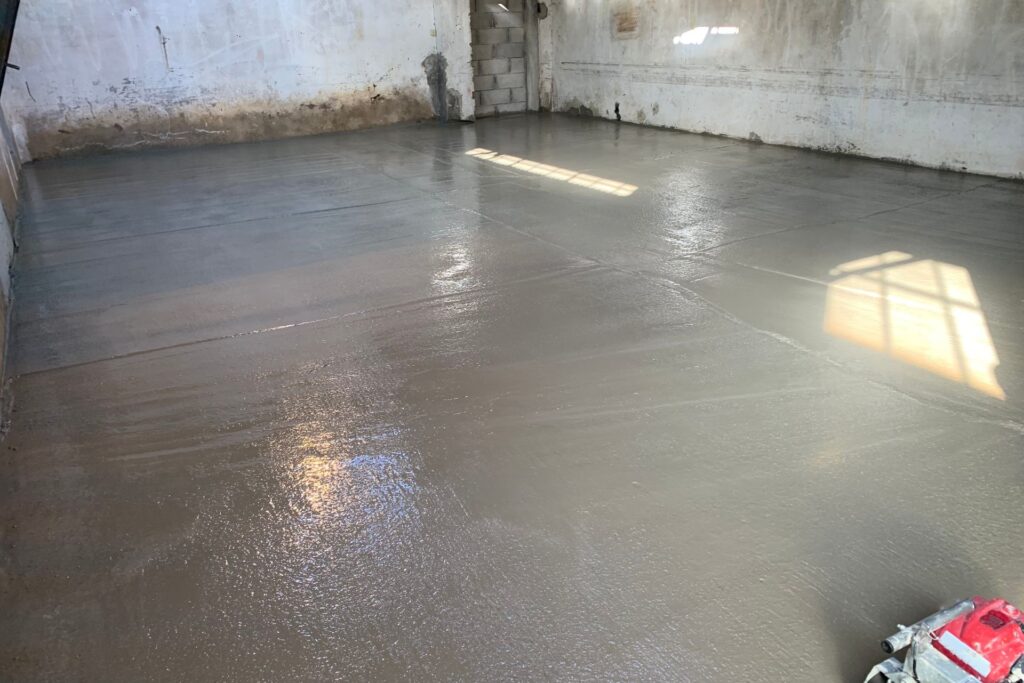
Benefits Of Covering Concrete
When it comes to concrete, proper curing is a crucial step that offers several significant benefits. Let’s dive into how covering concrete can enhance its strength and durability, prevent cracks, and extend the lifespan of concrete structures.
Enhanced Strength and Durability
One of the primary benefits of covering concrete during the curing process is the enhancement of its strength and durability. Proper curing ensures that the concrete retains moisture, which is essential for the hydration process. Hydration is the chemical reaction between cement and water that allows concrete to set and gain strength. By covering the concrete, you create an environment that retains moisture, allowing the hydration process to continue uninterrupted. This results in concrete that is significantly stronger and more durable.
For instance, if the concrete is left uncovered, it can dry out too quickly, leading to incomplete hydration. This can cause the concrete to be weaker and more susceptible to damage over time. On the other hand, covered concrete can achieve its full potential strength, making it better able to withstand the stresses and loads it will encounter throughout its life.
Preventing Cracks
Another critical advantage of covering concrete is the prevention of cracks and surface defects. When concrete is exposed to the air, it can lose moisture rapidly, leading to shrinkage. This shrinkage can cause the concrete to crack, especially on the surface. Cracks not only affect the aesthetic appeal of the concrete but can also compromise its structural integrity.
By covering the concrete, you help maintain a consistent level of moisture, which minimizes the risk of shrinkage and, consequently, the formation of cracks. This is particularly important in environments with high temperatures or low humidity, where the rate of evaporation can be quite high. Covering the concrete with materials such as plastic sheets, burlap, or specialized curing blankets can effectively prevent the rapid loss of moisture, thereby reducing the likelihood of cracks and ensuring a smooth, defect-free surface.
Longevity
Lastly, covering concrete plays a vital role in extending the lifespan of concrete structures. Well-cured concrete is more resistant to various environmental factors, including freeze-thaw cycles, chemical exposure, and physical wear and tear. This enhanced resistance means that concrete structures will maintain their integrity and functionality for a much longer period.
For example, concrete that has been properly cured by covering is less likely to suffer from surface scaling and other forms of degradation caused by harsh weather conditions. This long-term durability translates to lower maintenance costs and fewer repairs over the life of the structure. In essence, investing in proper curing methods, such as covering the concrete, pays off by ensuring that the structure remains robust and serviceable for many years.
In conclusion, the benefits of covering concrete during the curing process are manifold. Enhanced strength and durability, prevention of cracks, and extended longevity are just a few of the key advantages that proper curing provides. By taking the time to cover concrete and ensure it cures correctly, you can significantly improve the performance and lifespan of your concrete structures, making it a worthwhile investment for any construction project.

Methods Of Covering Concrete
When it comes to covering concrete, choosing the right method is essential for ensuring the longevity and strength of the concrete structure. Here, we will explore various methods of covering concrete, including their pros and cons, and provide guidance on their proper use.
Plastic Sheeting
Pros:
Cost-Effective: Plastic sheeting is an affordable option for covering concrete. It is readily available and relatively inexpensive compared to other methods.
Ease of Use: It is easy to handle and can be quickly laid over the concrete surface.
Moisture Retention: Plastic sheeting is excellent at retaining moisture, which is crucial for the curing process of concrete.
Cons:
Risk of Uneven Curing: If not properly sealed, plastic sheeting can lead to uneven curing, resulting in weaker spots in the concrete.
Environmental Concerns: Plastic is not the most environmentally friendly option, as it contributes to plastic waste.
How to Properly Use Plastic Sheeting
1. Preparation: Clean the concrete surface to remove any debris.
2. Application: Lay the plastic sheeting directly over the concrete, ensuring it extends beyond the edges to prevent moisture loss.
3. Sealing: Secure the edges with weights or tape to keep the sheeting in place and prevent air gaps.
Concrete Blankets
When to Use Them
Concrete blankets are particularly useful in cold weather conditions where maintaining a stable temperature is crucial for proper curing.
Benefits
Temperature Control: Concrete blankets help maintain an optimal temperature, preventing the concrete from freezing in cold weather.
Ease of Removal: They are easy to remove and reuse, making them a practical option for multiple projects.
Drawbacks
Higher Cost: Concrete blankets can be more expensive than other covering methods.
Storage and Handling: They require proper storage and handling to avoid damage, which can add to the overall maintenance cost.
Curing Compounds
Types
- Acrylic: Provides a durable and long-lasting seal.
- Water-Based: Eco-friendly and easy to clean up.
- Resin-Based: Offers superior moisture retention.
Application Methods
- 1. Spraying: Use a sprayer to evenly coat the concrete surface with the curing compound.
- 2. Rolling: A roller can also be used for an even application, especially on smaller surfaces.
Effectiveness
- Moisture Retention: Curing compounds are highly effective in retaining moisture, ensuring proper hydration and strength development.
- Surface Protection: They form a protective layer that guards against environmental elements.
Other Methods
Wet Burlap
- Usage: Wet burlap can be laid over the concrete to keep it moist.
- Pros: It is biodegradable and provides even moisture distribution.
- Cons: Requires frequent re-wetting to maintain effectiveness.
Sand
- Usage: A layer of damp sand can cover the concrete.
- Pros: Sand is readily available and can be reused.
- Cons: It can be messy and may require frequent maintenance.
Straw
- Usage: Straw can be spread over the concrete to retain moisture.
- Pros: It is a natural and biodegradable option.
- Cons: Straw can blow away in windy conditions and may need to be secured.
Each method of covering concrete has its unique benefits and drawbacks. The choice of method depends on factors such as project budget, environmental conditions, and the desired quality of the finished product. By understanding and properly applying these methods, you can ensure the concrete cures effectively, resulting in a strong and durable structure.
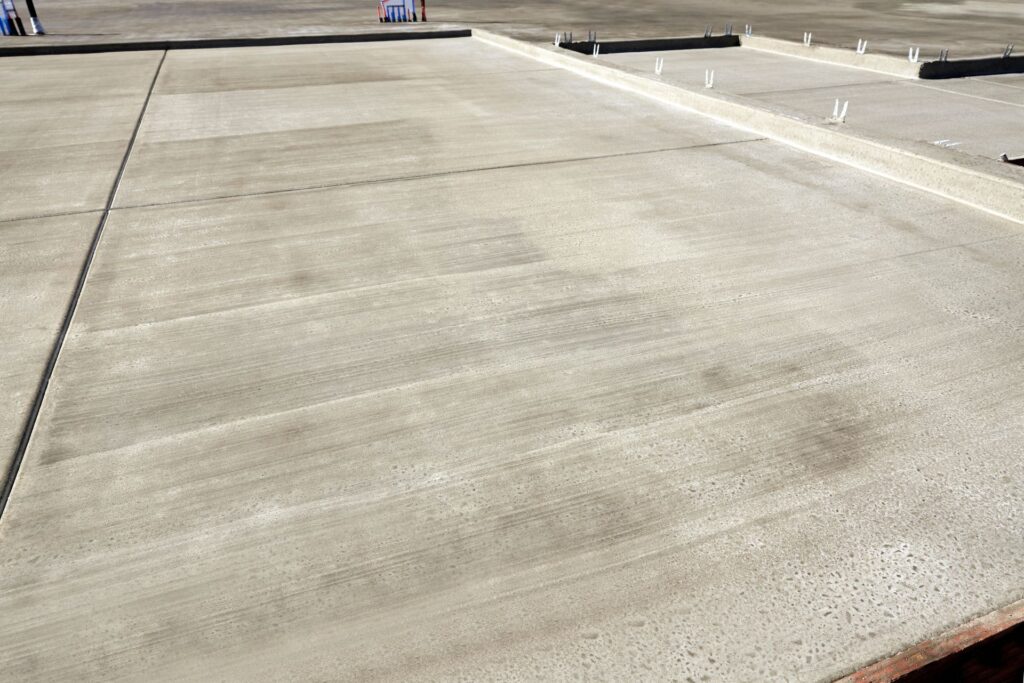
Step-By-Step Guide To Covering Concrete
Covering concrete is a crucial step in ensuring its durability and longevity. Whether you are working on a small DIY project or a large-scale construction job, proper concrete covering can prevent cracks, improve curing, and enhance the overall strength of the concrete. Here’s a comprehensive guide to help you through the process.
Preparation
Before you even start mixing your concrete, preparation is key. Proper preparation ensures that the concrete sets correctly and is less likely to develop issues down the line. Here’s what you need to do:
1. Clear the Area: Make sure the site is clean and free from debris. Remove any loose dirt, rocks, or plants that could interfere with the concrete.
2. Set-Up Forms: Use wooden or metal forms to outline the area where the concrete will be poured. Ensure these forms are secure and level to prevent any spillage and to achieve the desired shape.
3. Moisten the Surface: Lightly wet the base where the concrete will be poured. This helps prevent the ground from absorbing too much water from the concrete mix, which can weaken the final product.
4. Gather Materials: Have all your tools and materials ready. This includes the concrete mix, water, protective coverings, and any additives you might be using.
Applying the Covering
Once you have poured and leveled the concrete, the next step is to cover it. Proper covering helps retain moisture, which is essential for the curing process. Here’s how to do it:
1. Initial Setting: Allow the concrete to set initially for about 1-2 hours. This allows the surface to firm up slightly, reducing the risk of damaging it when placing the covering.
2. Apply a Curing Compound: Use a curing compound if you have one. Spray it evenly across the surface. This compound helps seal in moisture and can improve the concrete’s strength.
3. Use Wet Burlap or Plastic Sheeting: Place wet burlap or plastic sheeting over the concrete. If you are using burlap, ensure it is thoroughly soaked and that it stays wet during the curing process. For plastic sheeting, make sure it is laid flat without wrinkles to avoid any air pockets.
4. Secure the Covering: Anchor the edges of the covering with weights or stakes to prevent it from being blown away by the wind. Ensure that the covering completely covers the concrete surface.
Monitoring and Maintenance
Proper monitoring and maintenance during the curing process are vital to ensure the concrete reaches its maximum strength. Follow these steps:
1. Regular Checks: Check the covering at least twice a day. Ensure that the burlap remains wet or that the plastic sheeting is still securely in place.
2. Re-wet as Needed: If you notice the burlap drying out, re-wet it immediately. Consistent moisture is key to proper curing.
3. Inspect for Damage: Look for any signs of damage or displacement in the covering. Fix any issues promptly to avoid exposure to the elements.
4. Maintain for 7 Days: Keep the concrete covered for at least 7 days. This period allows the concrete to cure properly, improving its strength and durability.
Covering concrete correctly is an essential part of any concrete project. By following these detailed steps, you can ensure that your concrete cures properly, resulting in a strong and durable surface. Proper preparation, diligent application of the covering, and consistent monitoring and maintenance will lead to the best results for your concrete project.
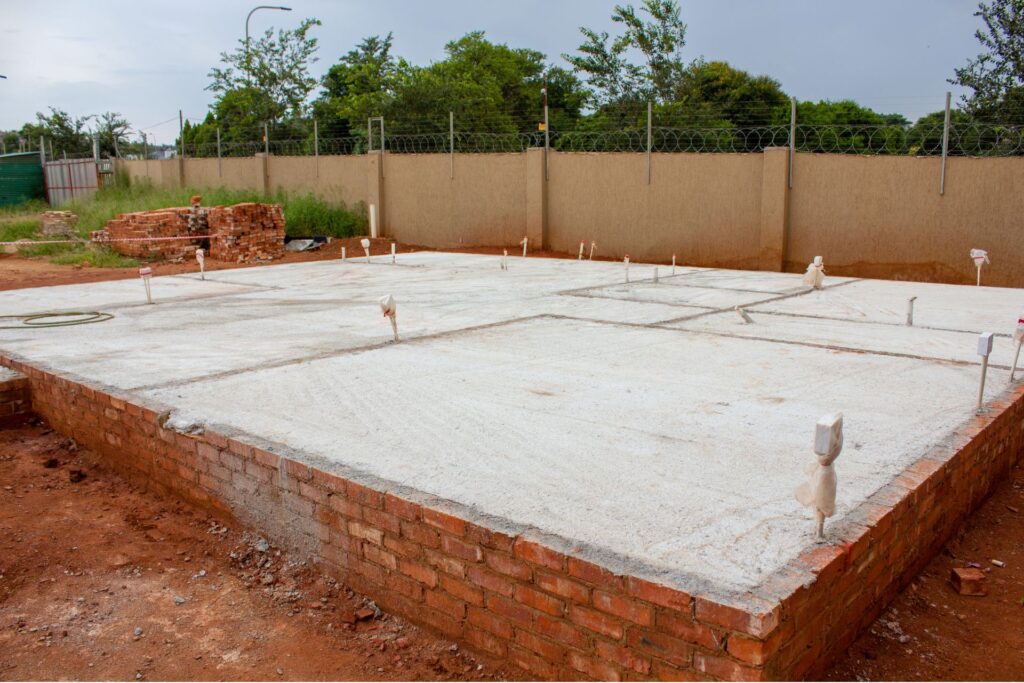
Common Mistakes To Avoid
Covering Too Late
Covering concrete too late can significantly impact its quality. Freshly poured concrete is vulnerable to environmental factors, such as temperature fluctuations, wind, and humidity, which can cause rapid moisture loss. This early-stage drying, known as plastic shrinkage, can lead to surface cracking and weakened structural integrity. To prevent this, it’s essential to cover the concrete as soon as it reaches the initial set, typically within a few hours after pouring. Prompt covering helps retain moisture, facilitating proper hydration and curing, which are crucial for achieving the desired strength and durability.
Improper Materials
Using the wrong covering materials can jeopardize the curing process and, consequently, the quality of the concrete. Common materials for covering include plastic sheeting, burlap, and curing blankets, each chosen based on specific conditions and project requirements. For instance, plastic sheeting is effective in retaining moisture but can trap heat, making it unsuitable for hot conditions. Burlap, on the other hand, must be kept wet to be effective. Selecting materials that don’t suit the project’s environmental conditions can lead to inadequate curing, resulting in a weak and porous concrete surface. Therefore, it’s vital to choose the right materials that align with the project’s specific needs and environmental conditions.
Inadequate Coverage
Inadequate coverage is another critical mistake that can compromise the concrete’s quality. Ensuring complete and consistent coverage is essential to maintain uniform moisture levels throughout the curing process. Any exposed areas can dry out faster than covered sections, leading to differential curing rates and, ultimately, cracking or surface defects. To achieve adequate coverage, use overlapping sheets or blankets and secure them properly to prevent movement caused by wind or other factors. Additionally, regular inspection and adjustment of the covering materials can help ensure they remain in place and continue to provide effective protection throughout the curing period.
By avoiding these common mistakes, you can ensure that your concrete achieves its optimal strength and durability, leading to a successful and long-lasting construction project.
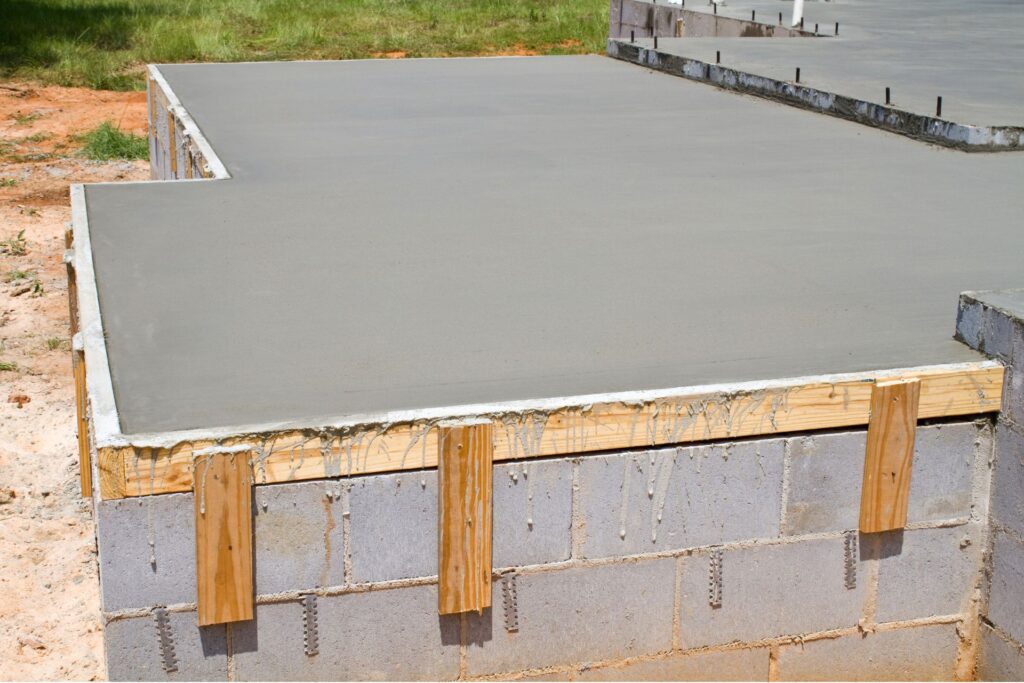
FAQs: About Should I Cover Concrete After Pouring?
How long should I cover the concrete after pouring?
Concrete should typically be covered for at least 7 days to ensure proper curing. In colder weather, it may be necessary to cover it for longer periods to maintain adequate moisture and temperature.
What materials can I use to cover concrete?
Common materials for covering concrete include plastic sheeting, concrete blankets, wet burlap, sand, straw, and curing compounds. Each material has its own benefits and should be chosen based on the specific needs of the project.
Can I walk on concrete while it’s covered?
It’s best to avoid walking on covered concrete during the initial curing period. If necessary, ensure that any movement is minimal and does not disturb the covering or the surface of the concrete.
What happens if I don’t cover my concrete?
If concrete is not covered, it can lose moisture too quickly, leading to cracks, reduced strength, and surface defects. Proper curing is essential to achieving a durable and long-lasting concrete structure.
How do I know when it’s time to uncover concrete?
Concrete is typically ready to be uncovered after the initial curing period of 7 days. However, it’s important to check the concrete’s hardness and ensure that it has adequately cured before removing the covering.
Can covering concrete affect its color?
Covering concrete can help prevent discoloration caused by uneven curing and exposure to elements. Properly covered concrete will generally cure more uniformly, resulting in a consistent color.
Should I cover concrete in hot weather?
Yes, covering concrete in hot weather is crucial to prevent rapid moisture loss. Using materials like wet burlap or plastic sheeting can help maintain moisture levels and temperature, ensuring proper curing.
Is it necessary to cover concrete in cold weather?
Yes, in cold weather, covering concrete is essential to protect it from freezing temperatures. Concrete blankets or insulated covers can help maintain the necessary warmth for proper curing.
Can I use a curing compound instead of physical coverings?
Yes, curing compounds are an effective alternative to physical coverings. They form a protective layer on the surface, retaining moisture and ensuring proper curing. Follow the manufacturer’s instructions for application.
How can I monitor the curing process while the concrete is covered?
Regularly check the condition of the covering material and ensure it remains intact and effective. You can also monitor the temperature and humidity levels under the covering to ensure optimal curing conditions.
Conclusion
In conclusion, it’s essential to remember the key points discussed: the importance of the water-cement ratio in concrete mix design, the role of proper curing techniques, and the long-term benefits of adhering to best practices. Proper curing ensures that concrete achieves its desired strength and durability, which is critical for the longevity of any construction project. By paying attention to these details, you can significantly enhance the performance and lifespan of your concrete structures. If you have any doubts or need further assistance, don’t hesitate to seek professional advice to ensure you’re following the best practices in your projects.
About the Author:
Mike Veail is a recognized digital marketing expert with over 6 years of experience in helping tradespeople and small businesses thrive online. A former quantity surveyor, Mike combines deep industry knowledge with hands-on expertise in SEO and Google Ads. His marketing strategies are tailored to the specific needs of the trades sector, helping businesses increase visibility and generate more leads through proven, ethical methods.
Mike has successfully partnered with numerous companies, establishing a track record of delivering measurable results. His work has been featured across various platforms that showcase his expertise in lead generation and online marketing for the trades sector.
Learn more about Mike's experience and services at https://theleadguy.online or follow him on social media:
